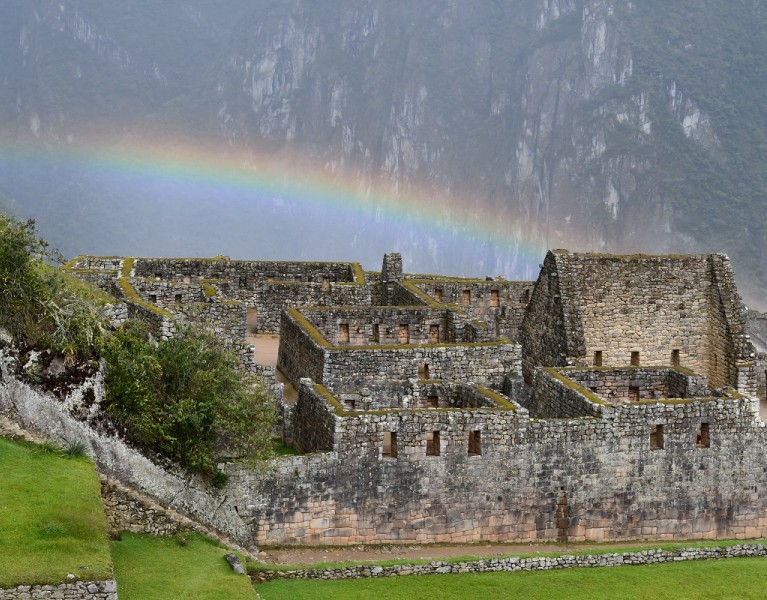
Trip Report: Enriching Experience at Machu Picchu
Table of Contents [Show]
“The purpose of life is to live it, to taste experience to the utmost, to reach out eagerly and without fear for newer and richer experience.”
― Eleanor Roosevelt
When we disembarked from our week long Galapagos Islands cruise, we were at the midpoint of our adventure. To make the most of our 10-hour travel time to South America, we joined a group of 10 other Xpedition passengers who elected a journey to Peru to visit Lima, the Sacred Valley, Cusco, and Machu Picchu. This all-inclusive Celebrity Cruises land package left little room for error. Every aspect of the trip was executed to the most exquisite detail by our Peruvian coordinator, Juan Carlos Nina and our local guide, Oscar Medina Guiterrez.
Traveling to Machu Picchu
We accessed Machu Picchu by train and bus rather than on foot. Our designated travel time coincided with the beginning of the rainy season (November to March). The PeruRail vistadome panoramic train was our best bet for transportation to the site. Some adventure seekers may say we missed out on a once in a lifetime trek through the Peruvian mountains along the famous Inca Trail. I consider it a trade-off since we were treated to luxurious hotels and fine dining. On our way back to Cusco, we enjoyed a memorable ride aboard the Belmond Hiram Bingham. The Orient Express operates this exclusive three-hour train ride.
History
Sometimes, small segments of time pack a punch. Even though our actual time in Machu Picchu was limited to an afternoon visit, our trek sent us back to the second half of the 15th century, when the Incas started constructing Machu Picchu.
History books tell us that in 1911 a few indigenous people led Hiram Bingham III to Machu Picchu. Bingham had organized the Yale Peruvian Scientific Expedition, which was searching for the Lost City of the Incas or Vilcabamba. Bingham’s insatiable desire to explore the desolate cloud forest in a remote corner of the Urubamba River revealed this incredible archeological site, which was later determined not to be the Lost City.
In the early part of the 20th century, few foreigners ventured into this part of the world. After Bingham shared, and later published, his photographs, others followed. In 1948, public access increased tremendously with the opening of the road from the train station to the city’s entrance. In 1983, Machu Picchu was acknowledged as a Cultural and Natural World Heritage Site by UNESCO, and in 2007 became one of the Seven New Wonders of the Modern World. Due to the site’s immense popularity, the Peruvian government has now restricted access to the Historic Sanctuary of Machu Picchu to set times and requires visitors to be part of an escorted tour with less than 16 participants. The maximum allotted time to visit the Historic Sanctuary of Machu Picchu is four hours.
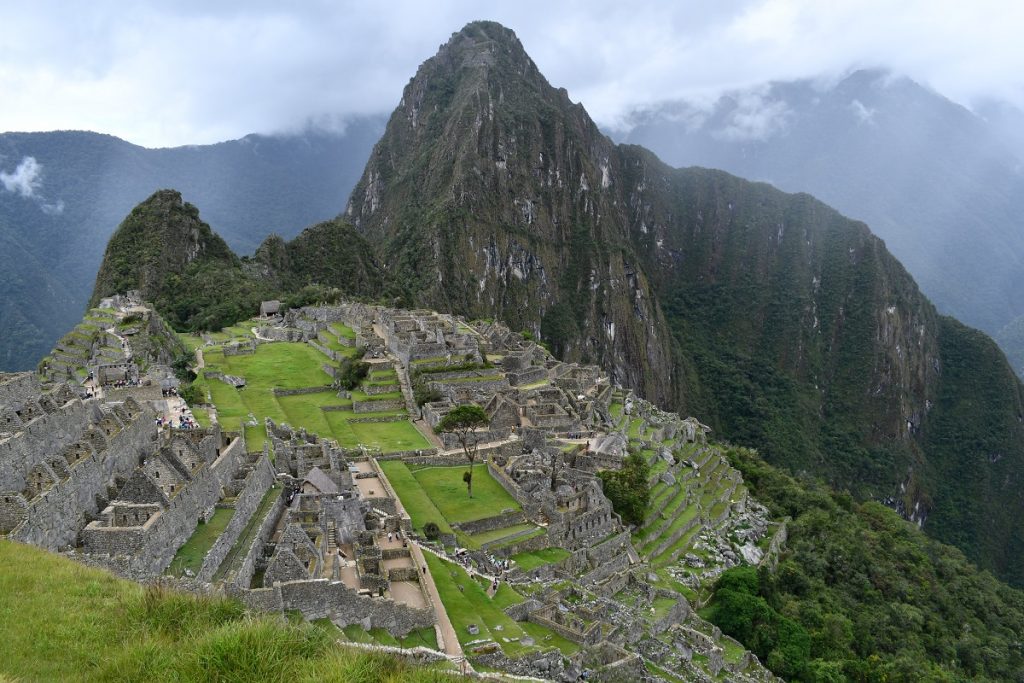
Subsequent expeditions after Bingham’s discovery provided clues about the lifestyle of the men, women, and children who lived in Machu Picchu. Some of the items unearthed during Bingham’s 1912 expedition are on display at the Machu Picchu Museum in Cusco and at the Museo de Sitio Manuel Chávez Ballónin Machu Picchu.
Without written records, many questions regarding this site remain unanswered. To this day, scientists continue to analyze the artifacts, buildings, and the surrounding terrain to create new theories. However, no one knows why or when the city was abandoned or why this city’s existence remained a secret when the Spanish took control.
Magnificent Machu Picchu
Like other travelers who are drawn to destinations encased in mysteries, my husband and I were eager to embark on a mini-exploration of the site. The fantastic views evoked continuous oohs and ahs from our group as we traversed on the muddy paths and slippery, uneven stone walkways. We walked uphill and downhill at a moderate pace to accommodate the varying ability levels of our group. We passed several people traipsing around in open sandals. Sturdy walking shoes, hiking boots, and waterproof rain gear are a necessity during inclement weather.
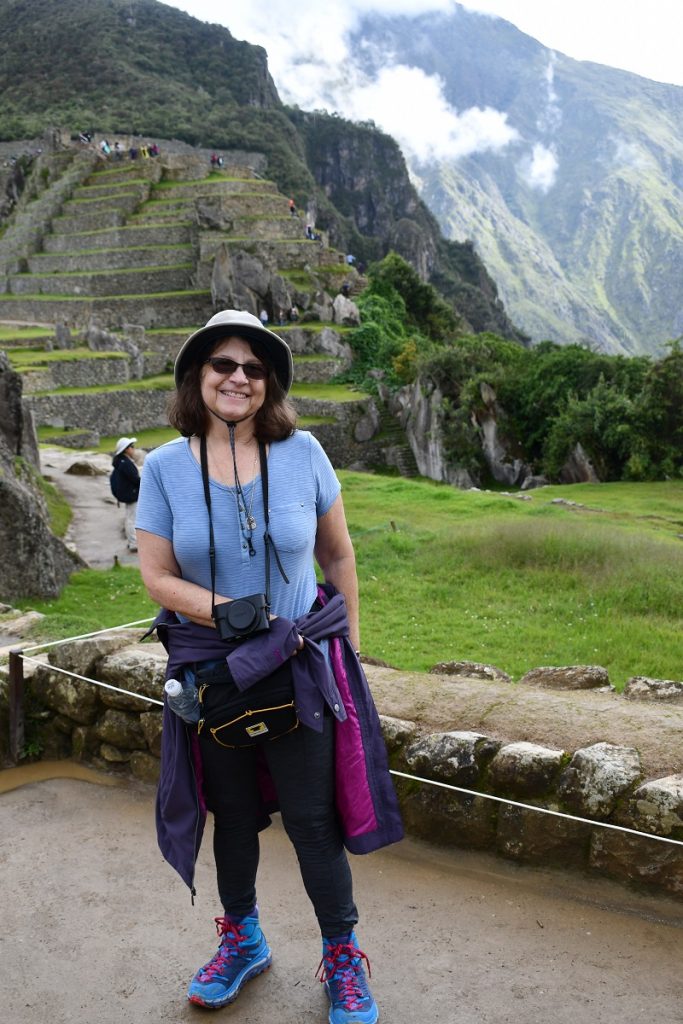
The setting for this archaeological masterpiece reminded me of a mystical story. Unscalable cliffs bordered three sides of the community leaving only one viable entry point. Multi-layers of clouds hovered over the nearby jagged mountain peaks as raindrops cascaded to the ground. Against the backdrop of different shades of green covering the foreground and horizon, a smattering of wildflowers and random rainbows offered splashes of color. Far below in the bottom of the valley, a river meandered in the basin.
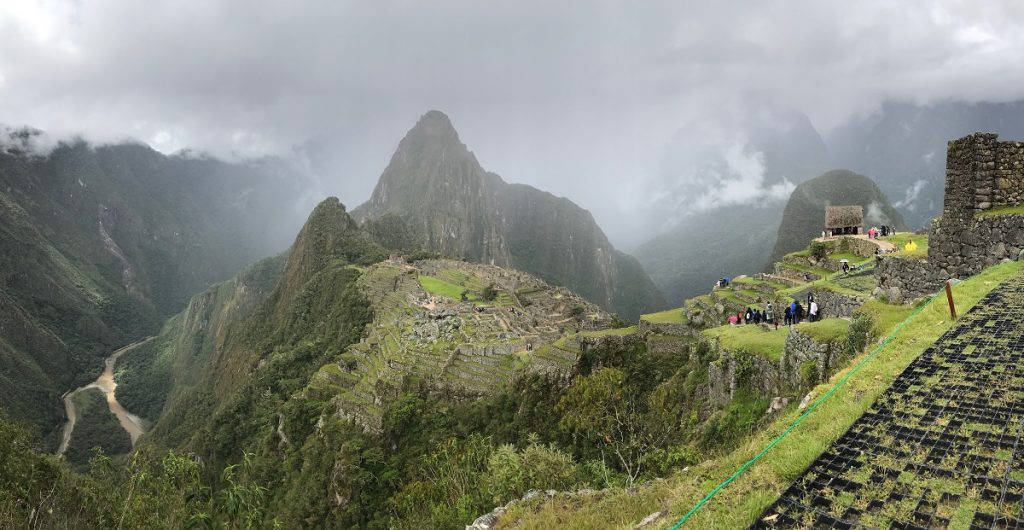
As we hiked on our escorted tour, we stood at several lookout points to capture panoramic photos and videos of the surrounding area as well as pictures looking down at Machu Picchu. These images accentuate how city planners effectively used the terrain to build tiered housing and public buildings as well as construct agricultural regions. From our vantage points, we identified upper and lower urban areas that consisted of more than 200 structures (residences, temples, and public buildings) and upper and lower agricultural sectors.
Oscar interjected tidbits of information about the Incas and Machu Picchu as we strolled from one section to the next. We entered the remnants of buildings that were used for religious purposes and also passed through common areas used for social gatherings, as well as agricultural and residential areas. Almost all of the structures reflected a society that used its understanding of astronomy to regulate social, agriculture, and religious ceremonies.
Tour Highlights
After entering the Temple of the Sun, Oscar pointed to where the sun’s rays enter through a window each year on June 21, the Southern Hemisphere’s Winter Solstice, and project onto a carved rock. Scholars believe that this roofless, semi-circular temple was also used as an astronomical observatory to monitor the cosmos.
Inside the Main Temple, I felt like a dwarf next to the finely polished, oversized pieces of stone. Oscar had us examine how the bottom rows of stone fit perfectly next to the neighboring rocks.
At the top of a hill, we walked around a stone structure resembling a modern piece of artwork. Centuries ago, this sculpture was a vital piece to a solar clock that was part of a more abundant compound.
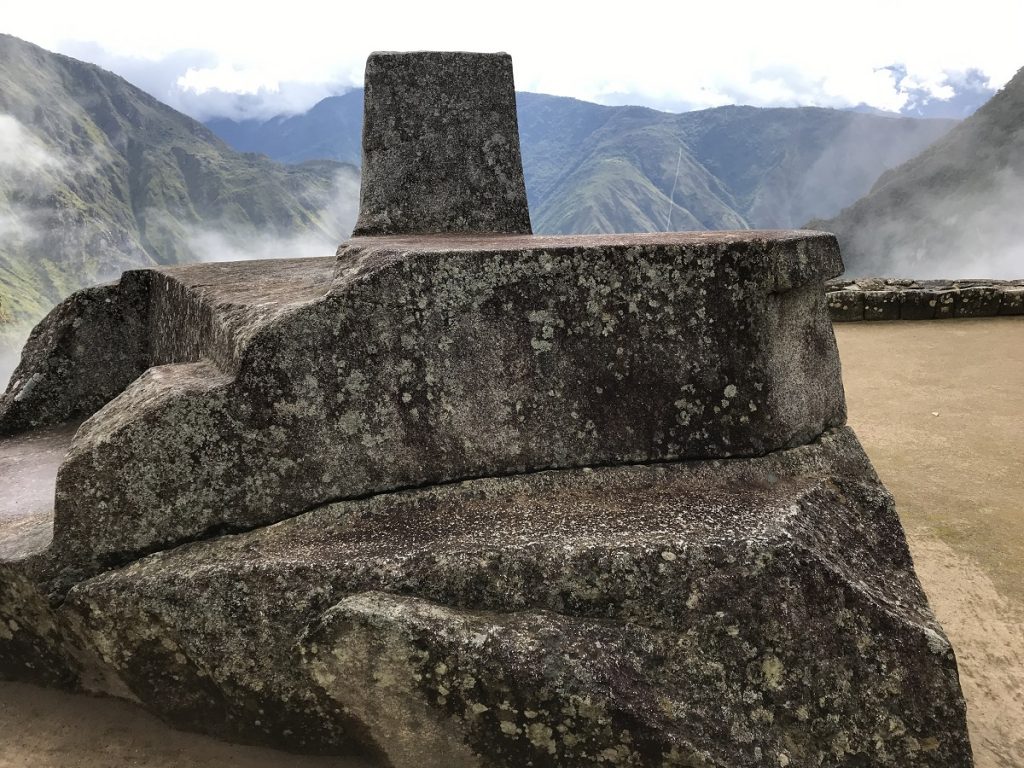
We entered a few single story houses constructed of stone masonry that once had thatched roofs. Oscar pointed to bar-holds that offered the residents protection from others and discussed how the architects maximized the effects of solar light and heat.
Water was not an issue for this community. Stone-lined canals funneled natural spring water from almost half a mile away. The spring was replenished each season during the rainy season. We also saw other canals that were used for drainage away from the city.
I would not have thought much about two round shaped stones that were cordoned off by a rope partition. Oscar called them astronomical mirrors. The indentations were filled with water and were used to reflect the sky’s image. One was used to observe the equinoxes while the other was for the winter solstice.
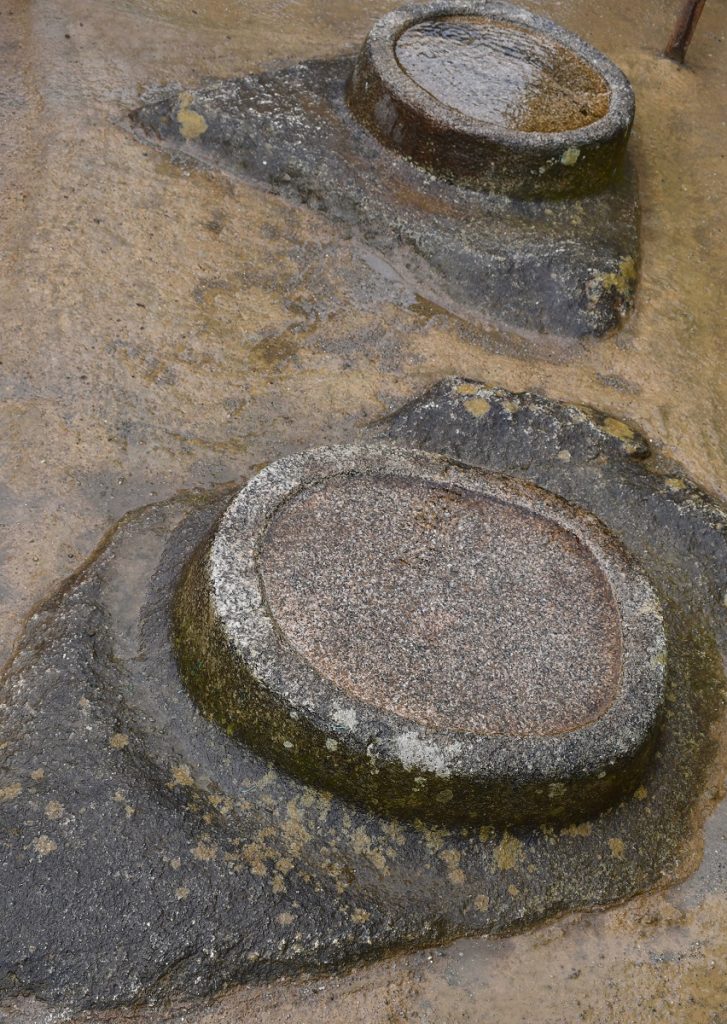
Near a staircase, we stopped to examine a carved stone piece less than a foot above the ground. Only a few people in the group correctly identified the outline as a condor’s head and neck. Adjacent to this image were ceremonial temples.
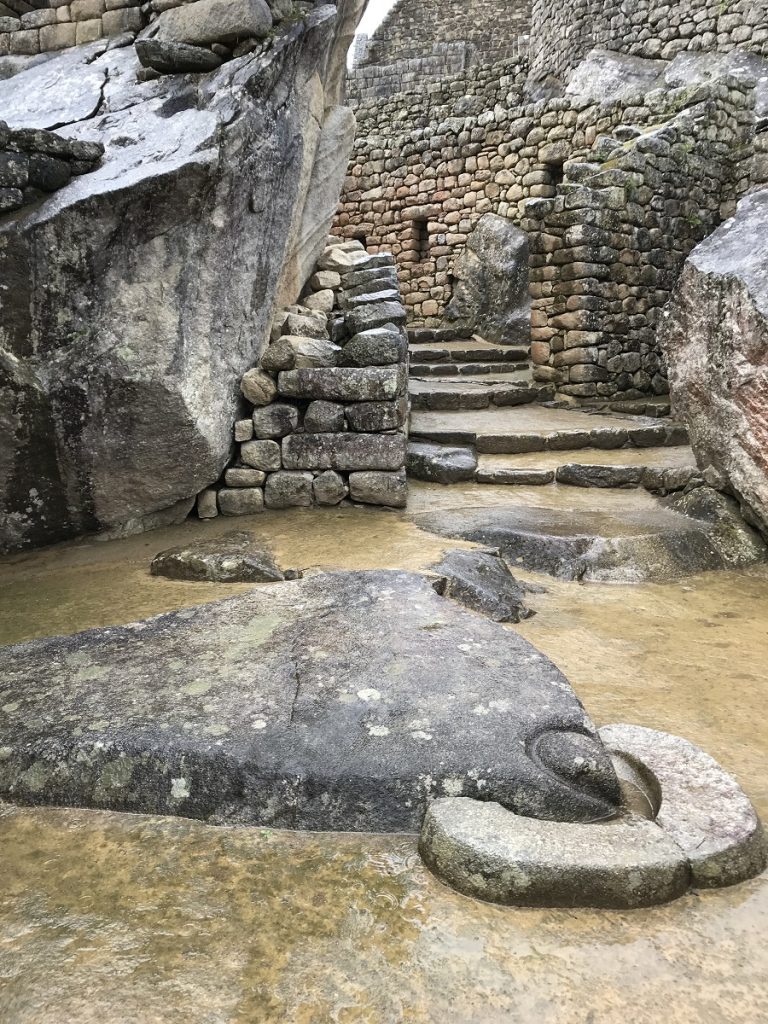
Agriculture terraces could be seen from different vantage points. These man made, high terrain agricultural sites at one time provided the sustenance for the entire community, numbering approximately 500 people. The soil still contains remnants of corn, potatoes, beans, coca, quinoa, zucchini, avocado, small tomatoes, and medicinal plants.
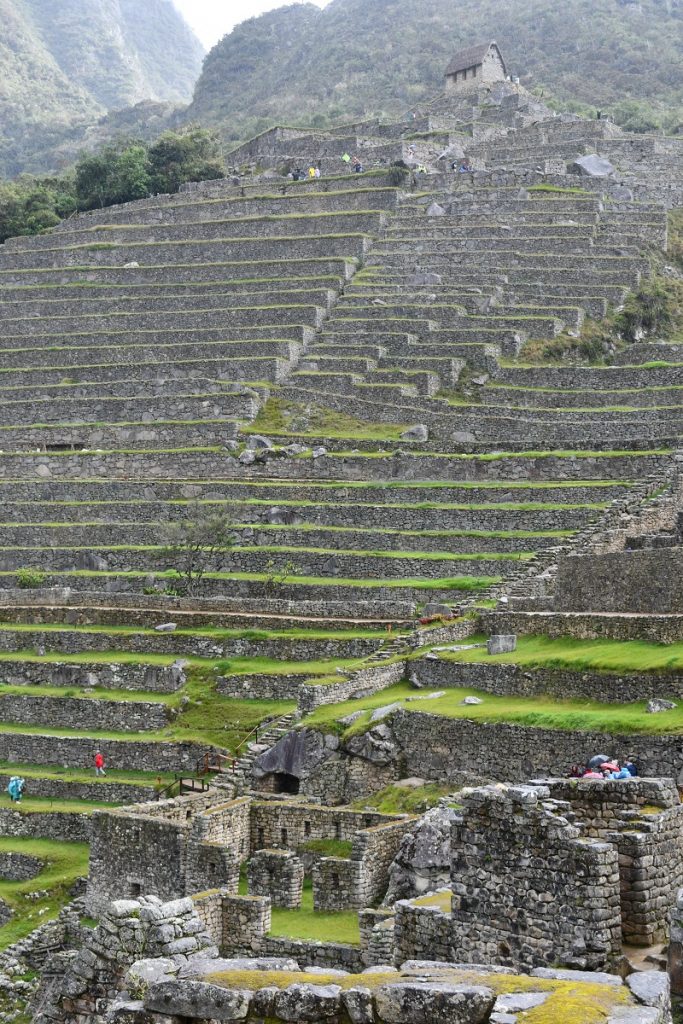
Reflection on Inca Culture
The ingenuity of the community planners and the incredible strength of the workers was impressive. Without the use of computers and technology, sturdy buildings were erected and have remained in place for hundreds of years despite the assault of natural elements. Large stone pieces were leveraged into place without any modern machinery. Stones in assorted sizes were hand carved and sanded to fit perfectly into their designated location. Exterior surfaces were designed to slant toward the outside to promote proper drainage.
I was also impressed with the way the Incas used their knowledge of astronomy to guide their agricultural decisions, as well as the celebration of festive ceremonies. For a 15th century community in a remote part of South America, the Incas had an incredible understanding of geography, topography, climate, hydrology, astronomy, and building techniques.
Luxurious Ending to Our Journey
As the Belmond Hiram Bingham train left Machu Picchu with the sun setting in the horizon, a small musical ensemble performed regional songs in the caboose. Within no time, small groups of passengers gathered around the bar area to sip pisco sours, nibble on appetizers, dance in the open space, and share the best parts of the day. In the middle of the three-hour journey, a gourmet meal was served on white table cloths in the dining cars.
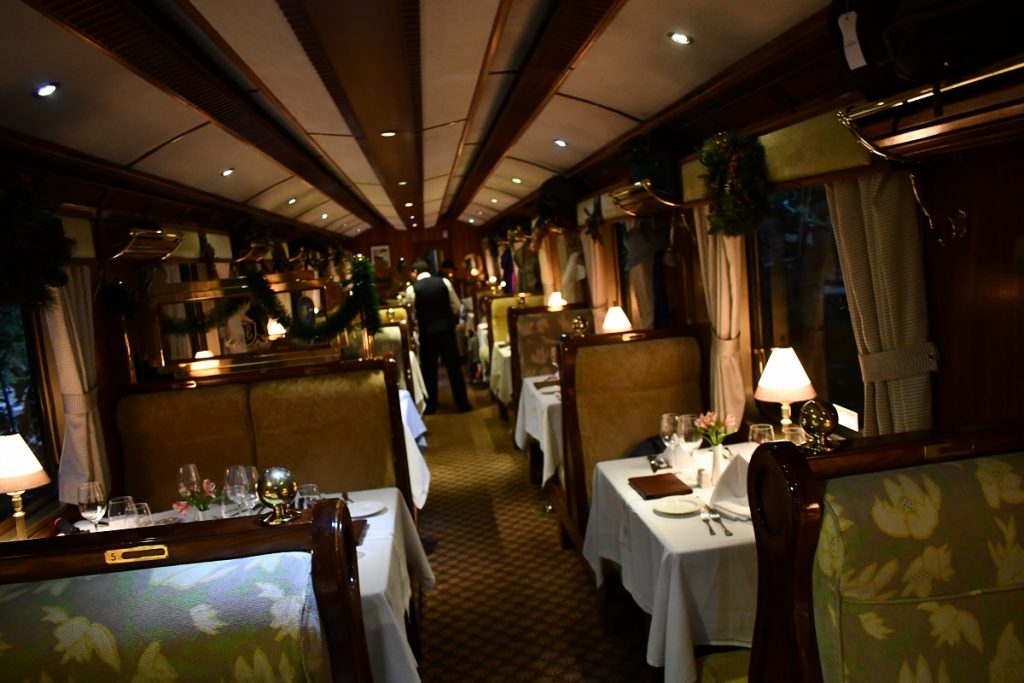
Centuries after the Inca culture faded away, I witnessed a smattering of what remains at Machu Picchu. Had I not pursued my passion for adventure, I would have missed out experiencing one of history’s finest chapters.
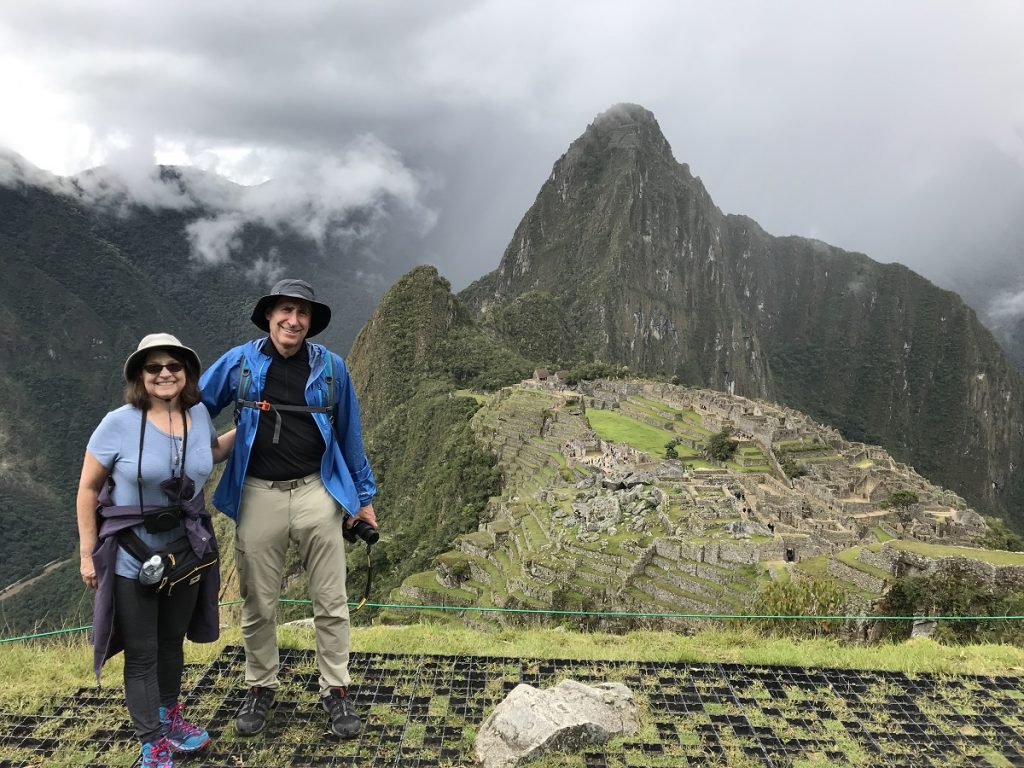
When Sandy Bornstein isn’t trekking in Colorado or writing, she’s traveling with her husband Ira. After living as an international teacher in Bangalore, India, Sandy published an award-winning book, May This Be the Best Year of Your Life, as a resource for people contemplating an expat lifestyle and living outside their comfort zone. Among other things, Sandy writes about family, intergenerational, and active midlife adventures highlighting land and water experiences.
All photos by The Traveling Bornsteins.


